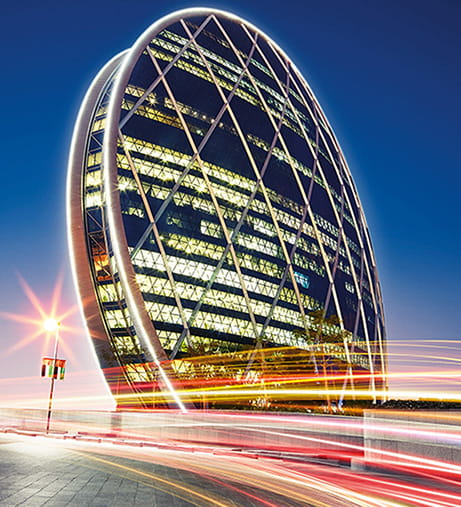#Featured
March 29, 2025
Explore How Eco-Friendly Living Shapes Real Estate
Eco-friendly living is changing the way people think about real estate. With rising concerns about climate change, more buyers are looking for homes that reduce their impact on the environment. In many regions, buildings are one of the largest sources of carbon emissions.
This has pushed developers to adopt green technologies and materials. As a result, demand for sustainable homes is growing. These homes offer energy savings, better air quality, and long-term value. Eco-conscious living is no longer a luxury; it’s becoming a standard.
What Is Eco-Friendly Living in Real Estate?
Eco-friendly living in real estate means designing, building, and operating homes in a way that reduces environmental harm. These properties use less energy, conserve water, and rely on materials that are either recycled or sourced with minimal impact.
The Shift Toward Sustainable Lifestyles
More people are making conscious choices about how and where they live. This shift toward sustainable lifestyles is influencing the real estate sector in major ways.
Homebuyers are no longer focused only on square footage or finishes; they’re asking whether a home supports energy savings, eco-friendly living, and reduced waste.
Several key drivers have accelerated this change:
- Global concern over climate change and the desire to minimise individual impact
- Soaring energy prices, which make efficient homes more cost-effective
- Urban pollution and indoor health risks, prompting demand for safer materials
- Supportive government policies that reward green practices through tax breaks or certifications
As sustainability becomes a core value for individuals and families, it’s reshaping what defines a “desirable” home.
Environmental Goals Behind Green Housing
Eco-friendly living isn’t just about saving money or reducing personal impact; it plays a critical role in addressing global environmental challenges.
The construction and use of buildings contribute significantly to climate change, resource depletion, and ecosystem disruption. As a result, governments and organisations are promoting eco-friendly living through policies that make sustainable housing part of the solution.
The broader environmental goals driving green building include:
- Reducing carbon emissions, since buildings produce up to 40% of global emissions
- Minimising resource consumption, from water and energy to raw materials
- Improving human health, especially through better air quality and low-toxicity materials
- Resilience to climate change, including efficient insulation and flood protection features
Green housing supports national targets like net-zero emissions and global goals such as the United Nations Sustainable Development Goals.
Renewable Energy Systems and Solar Integration
Solar energy is one of the most effective tools for supporting eco-friendly living and reducing a home’s environmental footprint. As renewable technologies become more affordable, solar systems are now widely adopted in both new and existing real estate developments.
These systems are central to eco-friendly living, helping reduce electricity use from fossil fuels while offering long-term savings for homeowners.
There are several ways solar energy is used in housing:
- Photovoltaic (PV) panels generate electricity for lighting, appliances, and HVAC systems
- Solar thermal collectors heat water for showers, kitchens, and pools
- Home battery storage allows excess energy to be stored for later use
- Grid-tied systems enable homeowners to earn credits by sending unused energy back to the grid
In sunny countries like the UAE, these systems are especially valuable—reducing bills by up to 60% and cutting thousands of kilograms of CO₂ annually.
-
Live closer to nature at The Wilds, a vibrant, low-impact community designed for those who value green space, clean air, and mindful living. Discover a life where sustainability and serenity come together in perfect balance.
Key Features of Eco-Conscious Properties
Eco-conscious properties are a core part of eco-friendly living, designed to lower environmental impact while improving quality of life for residents.
These homes are not defined by one feature but by a group of systems that work together to save energy, conserve resources, and support long-term sustainability.
As eco-friendly living gains traction, developers are prioritising efficiency, durability, and occupant health in every stage of planning and construction.
Smart Insulation, Lighting, and Appliances
Modern homes are becoming smarter and more efficient through targeted upgrades in insulation, lighting, and appliances. These improvements reduce energy consumption while enhancing comfort and convenience.
- High-performance insulation maintains stable indoor temperatures and lowers reliance on heating and cooling systems. Materials like spray foam or rigid foam boards are often used in walls, roofs, and floors.
- LED lighting uses up to 75% less energy and lasts up to 25 times longer than traditional bulbs, according to the U.S. Department of Energy. It also generates less heat, reducing cooling needs in warmer climates.
- Energy-efficient appliances, including refrigerators, washing machines, and air conditioners, are designed to use minimal electricity and water. Many carry Energy Star or equivalent ratings to help consumers identify top performers.
- Smart thermostats and home automation systems allow users to control usage patterns, reducing waste and optimising comfort based on time of day or occupancy.
These upgrades make homes more sustainable while also cutting monthly utility bills.
Water Conservation and Waste Reduction Solutions
Reducing water waste and improving waste management are essential in any eco-conscious property. These systems address both daily use and long-term resource impact.
- Low-flow fixtures such as faucets, showerheads, and dual-flush toilets can reduce household water use by up to 30%.
- Greywater recycling systems capture used water from sinks and showers for use in toilets or landscaping.
- Smart irrigation systems adjust watering schedules based on weather forecasts and soil moisture levels, reducing outdoor water waste.
- Composting and waste separation are integrated into many developments to encourage proper disposal and recycling of household waste.
- Construction waste management is also key, with many green developments recycling unused materials or sourcing from reclaimed stock.
These efforts lower a home’s environmental footprint and support long-term sustainability.
Use of Sustainable and Locally Sourced Materials
Material selection is one of the most important factors in sustainable building. Eco-conscious homes are made with materials that are environmentally friendly, safe, and durable.
- Renewable materials such as bamboo, cork, and hempcrete regenerate quickly and reduce pressure on natural ecosystems.
- Recycled products, like reclaimed wood or recycled concrete, lower the demand for virgin materials and reduce waste in landfills.
- Locally sourced building materials cut down on transportation emissions and support nearby industries.
- Low-VOC paints and finishes improve indoor air quality by limiting exposure to harmful chemicals.
- Durable materials require less maintenance and fewer replacements, which lowers environmental impact over the long term.
The use of these materials not only helps the environment but also enhances indoor health and long-term cost savings.
The Long-Term Value of Sustainable Homes
Sustainable homes offer long-term advantages that go beyond environmental benefits.
As living costs rise and awareness grows, buyers are looking for homes that promote eco-friendly living and are also financially smart.
These properties are built to perform efficiently for years, with features that lower bills, reduce maintenance, and comply with future regulations.
Energy Efficiency and Cost Savings Over Time
Energy-efficient homes lower monthly bills and reduce exposure to fluctuating utility prices. This is one of the key reasons why sustainable properties are gaining traction with cost-conscious buyers.
- High-efficiency insulation and windows help maintain indoor temperature, reducing the need for air conditioning or heating. This can lead to savings of 20% to 30% on annual energy bills, according to the U.S. Environmental Protection Agency.
- Energy-saving lighting and appliances consume less electricity, leading to smaller utility bills and fewer replacements over time.
- Solar panels and battery storage systems offer the potential for near-zero electricity costs, especially in sunny regions like the UAE.
- Smart home systems optimise energy use automatically, adjusting lighting, temperature, and appliance operation based on real-time needs.
These savings add up year after year, making energy efficiency one of the most valuable aspects of sustainable housing.
Increased Resale Value and Buyer Demand
Homes with sustainable features are proving more attractive in today’s property market. Buyers are actively looking for energy efficiency, healthy materials, and eco-certifications when making decisions.
- Green-certified homes often sell faster and at higher prices, especially in competitive markets. Studies show they can fetch premiums of 3–8% compared to traditional properties.
- Younger buyers, especially millennials and Gen Z, place strong value on environmental responsibility and are more likely to invest in homes that reflect their values.
- Eco-conscious developments stand out in listings and are more likely to retain value during economic downturns, as utility savings and health benefits remain appealing.
- Institutional investors and developers are increasingly favouring green properties for long-term portfolio performance and compliance with ESG (Environmental, Social, and Governance) goals.
This growing demand reinforces the idea that sustainability isn’t just an ethical consideration; it’s also profitable.
-
Step into refined sustainable living at Mandarin Oriental Residences by Aldar, where luxury meets eco-conscious design. Enjoy wellness-inspired architecture, timeless elegance, and a commitment to responsible living.

